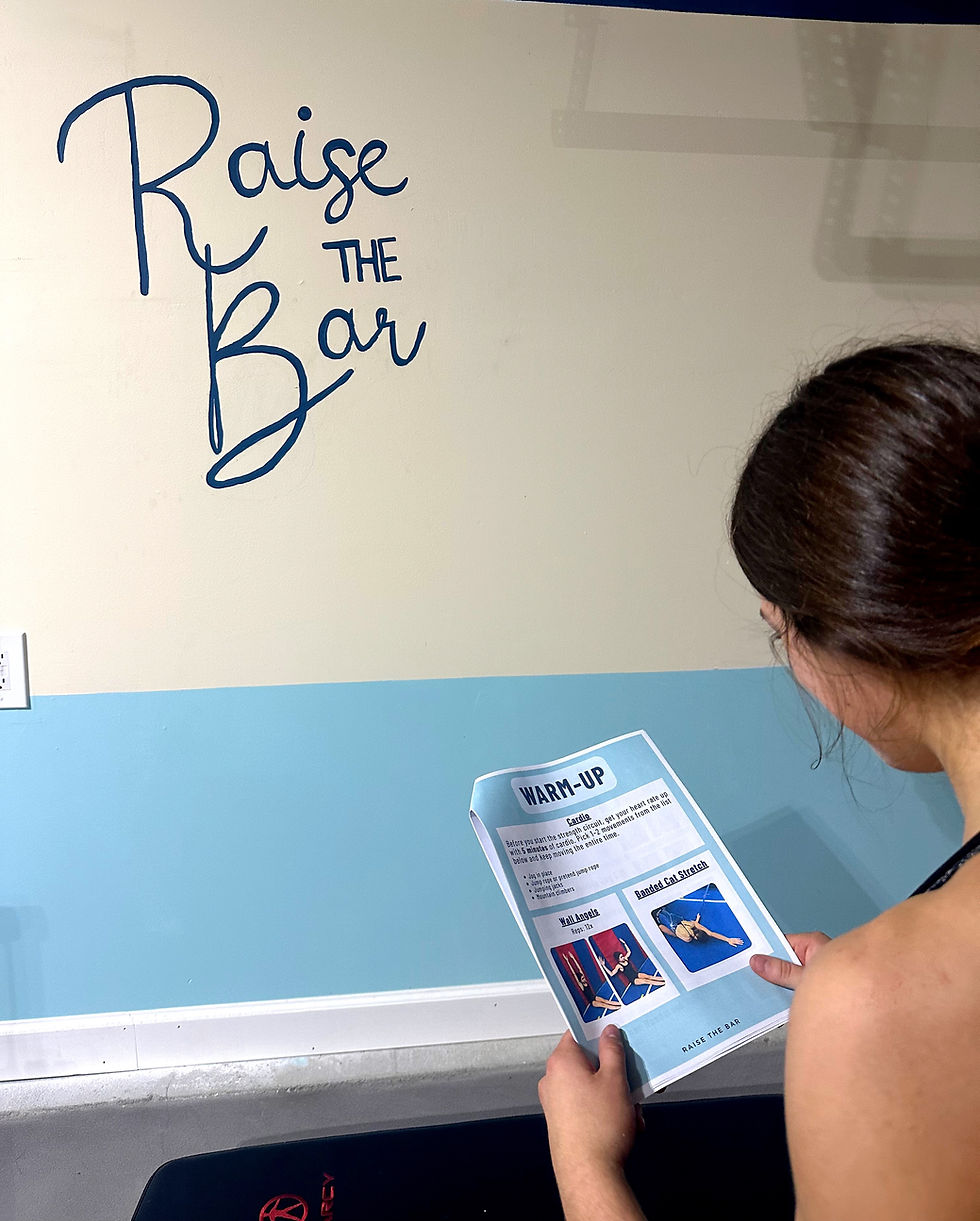6 Coaching Tips to Make Gymnastics Conditioning Run Smoothly
- raisethebargymnast

- Nov 2
- 2 min read
Conditioning is one of the most important parts of gymnastics training—but it can also be one of the most challenging to run efficiently. With multiple athletes moving at once, equipment to manage, and energy levels to balance, conditioning can easily become chaotic without a clear system.
Over the years, I’ve found that small, intentional changes can completely transform how smoothly conditioning runs. Here are six simple coaching tips to keep your gymnastics conditioning organized, efficient, and effective.
1. Keep It Consistent
Athletes thrive on routine. Using the same warm-up flow, familiar drills, and consistent formats helps athletes know what’s expected without needing constant explanation.Consistency reduces transition time and allows gymnasts to focus more on effort and form—not on figuring out what comes next.
2. Use a Giant Whiteboard
One of the simplest tools that makes a huge difference is a large whiteboard. Write out the conditioning plan before practice so every athlete can see it.This saves time answering “What’s next?” and helps the group move together. It also builds accountability since gymnasts can follow along without constant coach direction.
3. Demo on Week One (Especially for Visual Learners)
At the start of a new conditioning cycle, take time to demonstrate each exercise. Many gymnasts are visual learners and need to see correct form before they can repeat it consistently. Once they understand the movements, the rest of the cycle runs smoother with fewer corrections.
4. Encourage “Ask a Friend”
Teach athletes to ask a teammate if they forget what’s next or need a reminder. This builds teamwork and keeps practice moving instead of having every athlete come to the coach with the same question.Plus, explaining a drill reinforces understanding for the athlete giving the help—it’s a win-win.
5. Create a Set-Up & Clean-Up System
Conditioning flows faster when everyone knows their role in setting up and putting away equipment. Assign quick set-up and clean-up jobs so athletes know exactly what to grab or return.This simple system keeps the gym organized, saves time, and builds responsibility.
6. Use Athlete Guides
Athlete guides—whether printed, laminated, or digital—are a game-changer. These references outline the plan, reps, and expectations for each conditioning day.When gymnasts have access to guides, they become more independent and confident, helping practices run smoothly without constant instruction.
Final Thoughts: Run Gymnastics Conditioning Smoothly
Gymnastics conditioning doesn’t have to be stressful for coaches or athletes. By keeping it consistent, making plans visible, teaching exercises early, building teamwork, and setting clear systems, you can transform conditioning into one of the most efficient parts of practice.
The smoother your conditioning runs, the more energy you’ll have to coach—and the more energy your gymnasts can give to improving their skills.

Comments